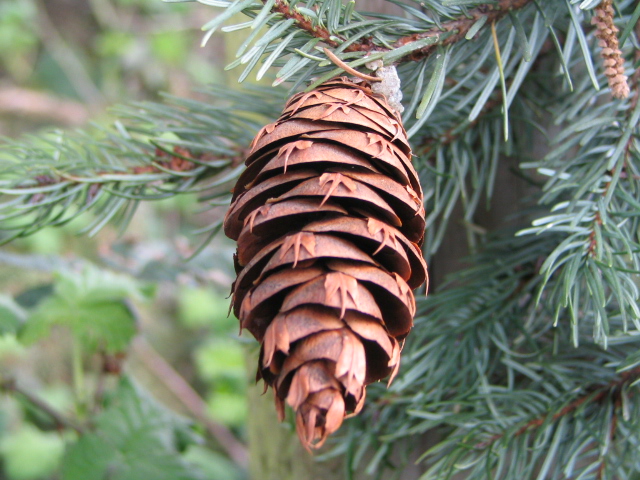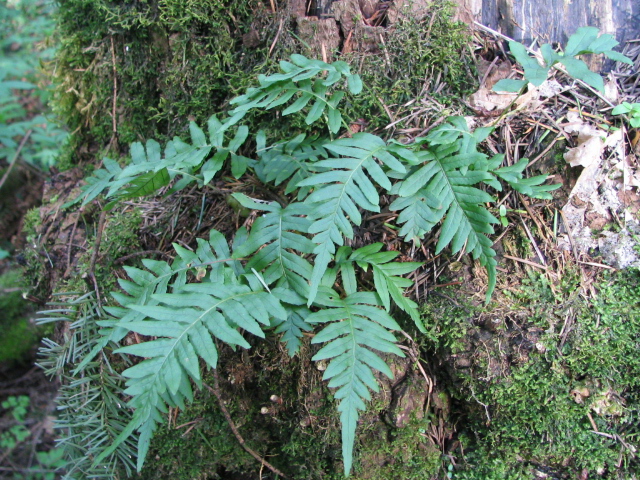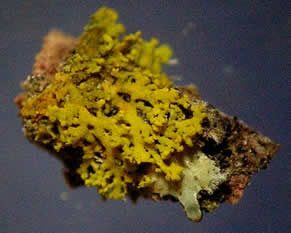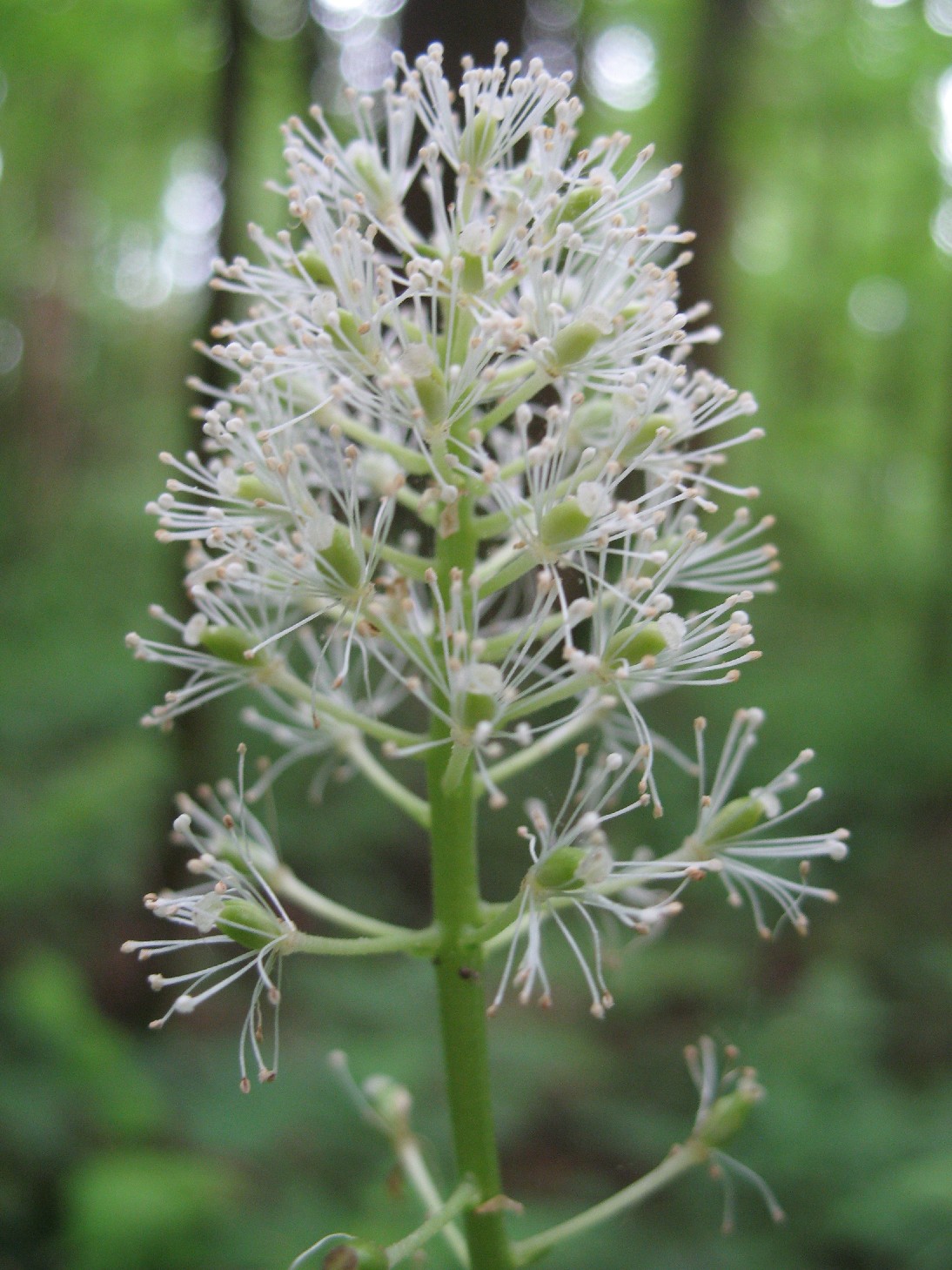Plant species
The plant lists below are an ongoing effort to document the many species that occur within the Environmental Studies Center. Data collection has taken place over the last ten years and has been a collaborative effort involving faculty, students, volunteers, and the Metro Greenspaces Program. Clicking on some plant names (as well as numbers listed after the species name) will lead to available photos taken on campus.
Trees and shrubs
Trees

- Bigleaf (Oregon) Maple (Acer macrophyllum)
- Bitter Cherry (Prunus emarginata)Bitter Cherry 1
- Black Cottonwood (Populus trichocarpa)
- Douglas-Fir (Psuedotuga menziessii) Douglas-Fir 1 Douglas-Fir 2 Douglas-Fir 3
- Grand Fir (Abies grandis)
- Mazzard Cherry (Prunus avium)
- Oregon Ash (Fraxinus latifolia) Oregon Ash 1 Oregon Ash 2
- Oregon White (Garry) Oak (Quercus garryana) Oregon White (Garry) Oak 1 Oregon White (Garry) Oak 2
- Pacific Crab Apple (Malus fusca) 1 Pacific Crab Apple 2
- Pacific (Western Flowering) Dogwood (Cornus nuttallii) 1 Pacific (Western Flowering) Dogwood 2
- Pacific Madrone (Arbutus menziesii)
- Pacific Yew (Taxus brevifolia) Pacific Yew 1 2
- Red Alder (Alnus rubra) 1 Red Alder (Alnus rubra) 1 2
- Scouler’s Willow (Salix scouleriana)
- Spruce (Picea sp.)
- Sweet Cherry (Prunus avium) – non-native
- Western Hemlock (Tsuga heterophylla)
- Western Redcedar (Thuja plicata)
Shrubs
- Baldhip Rose (Rosa gymnocarpa)
- Beaked Hazelnut (Corylus cornuta var. californica) 1 Beaked Hazelnut (Corylus cornuta var. californica) 1 2 Beaked Hazelnut (Corylus cornuta var. californica) 1 3
- Bearberry (Black Twinberry)
- Honeysuckle (Lonicera involucrata) 1 1 1 1 2
- Blackcap (Rubus leucodermis) Blackcap 1 Blackcap 2
- Black Gooseberry (Ribes lacustre)
- Black Hawthorn (Crataegus douglasii) 1 Black Hawthorn 2
- Cascara Buckthorn (Rhamnus pursiana) Cascara Buckthorn 1 Cascara Buckthorn 2
- Cinquefoil (Potentilla sp.)
- Common Hawthorn (Crataegus monogyna) Common Hawthorn 1 2 – non-native
- Common Snowberry (Waxberry) (Symphoricarpos albus) Common Snowberry 1 2
- Dull Oregon Grape (Mahonia nervosa) 1 Dull Oregon Grape 2
- English Holly (Ilex sp.) – non-native
- Evergreen Blackerry (Rubus laciniatus) Evergreen Blackerry 1 2 3 – non-native
- Himalayan Blackberry (Rubus discolor) Himalayan Blackberry 1 Himalayan Blackberry 2 3 – non-native
- Indian Plum (Oemleria cerasiformis)
- Nootka Rose (Rosa nutkana.) 1 Nootka Rose 2
- Oceanspray (Holodiscus discolor) 1 Oceanspray 2 Oceanspray 3
- Osoberry (Oemleria cerasiformis)
- Pacific Ninebark (Physocarpus capitatus) Pacific Ninebark 1 Pacific Ninebark 2 Pacific Ninebark 3
- Poison Oak (Rhus diversiloba) Poison Oak 1 Poison Oak 2
- Red Elderberry (Sambucus racemosa) Red Elderberry 1 Red Elderberry 2 Red Elderberry 3
- Red Huckleberry (Vaccinium parvifolium) Red Huckleberry 1 Red Huckleberry 2 3
- Red Osier Dogwood (Cornus stolonifera) 1 Red Osier Dogwood 2
- Red-flowering Currant (Ribes sanguineum)
- Salal (Gaultheria shallon) Salal 1 Salal 2 Salal 3
- Salmonberry (Rubus spectabilis) 1 Salmonberry 2
- Saskatoon (Amelanchier alnifolia) Saskatoon 1 Saskatoon 2 Saskatoon 3
- Serviceberry (Amelanchier alnifolia) Serviceberry 1 Serviceberry 2 Serviceberry 3
- Sweetbrier Rose (Rosa eglanteria) – non-native
- Tall Oregon Grape (Mahonia aquifolium) Tall Oregon Grape 1 Tall Oregon Grape 2
- Thimbeleberry (Rubus parviflorus) Thimbeleberry 1 2
- Trailing Blackberry (Rubus ursinus)
- Vine Maple (Acer circinatum) Vine Maple 1 Vine Maple 2
- Western Spirea (Spirea douglassi) Western Spirea 1 Western Spirea 2
- Western Trumpet Honeysuckle (Lonicera ciliosa) Western Trumpet Honeysuckle 1
- Willow (Salix sp.)
Ferns and horsetails
Ferns

- Bracken Fern (Pteridium aquilinum)
- Deer fern(Blechnum spicant)
- Lady fern (Athyrium filixfemina)
- Licorice Fern (Polypodium glycyrrhiza)
- Sword Fern (Polystichum munitum)
- Spiny Wood Fern (Dryopteris expansa)
Horsetails
- Common horsetail (Equisetum arvense)
- Scouring-Rush (Equisetum hyemale)
Lichens and grasses
Lichens

See more lichen information and photos.
- Candle Flame Lichen (Candelaria concolor)
- Toy Soldiers (Cladonia bellidiflora)
- Oakmoss Lichen (Evernia prunastri)
- Forked Tube Lichen (Hypogymnia imshaugii)
- Deflated Tube Lichen (Hypogymnia metaphysodes)
- Hooded Tube Lichen (Hypogymnia physodes)
- Powder-Headed Tube Lichen (Hypogymnia tubulosa)
- Lung Lichen, Lungwart (Lobaria oregana)
- Dotted Ramalina (Ramalina farinacea)
- Angel’s Hair (Ramalina thrausta)
- Powdered Beard Lichen (Usnea lapponica)
- Usnea pacificana
- Usnea subserilis
- Pin-Cushion Sunburst Lichen (Xanthoria polycarpa)
Grasses
- Bent Grass (Agrostis sp.)
- Manna Grass (Glyceria sp.)
- Meadow Foxtail (Alopecurus pralensis)
- Reed Canarygrass (Phalaris arundinacea)
- Tall Fescue (Festuca arundinacea)
- Timothy Grass (Phleum pratense)
- Velvet Grass (Holcus lanatus)
- Whitlow Grass (Draba verna)
Herbs

- Avens (Geum sp.)
- American Vetch (Vicia americana)
- Angled Bittercress (Cardamine angulata)
- Baneberry (Actaea rubra) Baneberry 1 Baneberry 2
- Beautiful Bittercress (Cardamine oligosperma)
- Bedstraw (Galium sp.)
- Biscuitroot (Lomatium sp.)
- Blue-eyed Grass (Sisyrinchium bellum)
- Broad-leaved Starflower (Trientalis latifolia) Broad-leaved 1 Broad-leaved 2
- Brumex Dock Toad (?)
- Burreed (Sparganium sp.)
- Buttercup (Ranunculus sp.)
- California False Hellbore (Veratrun californicum) California False Hellbore 1 California False Hellbore 2 California False Hellbore 3
- Camas (Camassia quamash)
- Canada Thistle (Cirsium arvense)
- Cleavers (Galium apartine) Cleavers 1 Cleavers 2
- Columbia (Tiger) Lily (Lilium columbianum)
- Common camas (Camassia quamash)
- Common Cowparsnip (Heracleum lanatum)
- Common Senecio (Senecio vulgaris)
- Creeping Buttercup (Ranunculus repens var rarnosus)
- Curled Dock (Rumex crispus)
- Duckweed (Lemna minor)
- Enchanter’s Nightshade (Circaea alpina)
- English Ivy (Hedera helix L.) – non-native
- Fairyslipper (Calypso bulbosa)
- False Solomon’s Seal (Smilacina racemosa) 1
- Few Seeded Bittercress (Cardamine oligosperma)
- Field Mustard (Brassica campestris)
- Fireweed (Epilobium angustifolium)
- Forget-me-not (Myosotis sp.)
- Fringecup (Tellima grandiflora) Fringecup 1 Fringecup 2
- Goatsbeard (Aruncus sylvester) Goatsbeard 1
- Great Camas (Cammasia leichtlinni) Great Camas 1 Great Camas 2
- Heal-All (Self-Heal) (Prunella vulgaris)
- Hedge Nettle (Stachys sp.)
- Hooker’s Fairybells (Disporum hookeri) Hooker’s Fairybells 1
- Inside Out Flower (Vancouveria hexandra) Inside Out Flower 1
- Japanese Knotweed (Polygonum cuspidatum) – non-native
- Little Buttercup (Ranunculus uncinatus)
- Lupine (Lupinus sp.) Lupine 1
- Meadow Checkerbloom (Sidalcea campestris)
- Miner’s Lettuce (Claytonia perfoliata) Miner’s Lettuce 1 Miner’s Lettuce 2
- Mountain Sweet Cicely (Osmorhiza chilensis) 1 Mountain Sweet Cicely 2
- Nuttall’s Toothwort (Cardamine nuttellii)
- Ox-eye Daisy (Chrysanthemum leucanthemum)
- Pacific Bleeding Heart (Dicentra formosa) Pacific Bleeding Heart 1 Pacific Bleeding Heart 2
- Pacific Water-parsley (Oenanthe sarmentosa)
- Pacific Waterleaf (Hydrophyllum tenuipes) Pacific Waterleaf 1 Pacific Waterleaf 2
- Palmate Coltsfoot (Petasites palmatus)
- Pathfinder (Adenocaulon bicolor) Pathfinder 1 Pathfinder 2
- Phacelia (Phacelia sp.)
- Plantain (Plantago sp.)
- Poison Hemlock (Cicuta maculata)
- Pyrola (Pyrola sp.) Pyrola 1 Pyrola 2
- Queen Anne’s Lace (Daucus carota)
- Red Clover (Trifolium pratense)
- Red Columbine (Aquilegia formosa) Red Columbine 1
- Redwood Sorrel (Oxalis oregana) Redwood Sorrel 1
- Shooting Star (Dodecatheon sp.)
- Siberian Miner’s Lettuce (Claytonia sibirica)
- Skunk Cabbage (Lysichitum americanum)
- Small-flowered Trillium (Trillium parviflorum)
- Spearmint (Mentha arvensis)
- Speedwell (Veronica sp.)
- Spotted Coralroot (Corallorhiza maculata ssp. maculata)
- Star-flowered False Solomon’s Seal (Smilacina stellata) Star-flowered False Solomon’s Seal 1 Star-flowered False Solomon’s Seal2
- Starwort (Callitriche sp.)
- Stinging Nettle (Urtica dioica) Stinging Nettle 1 Stinging Nettle 2
- St John’s wort (Hypericum sp.)
- Stream Violet (Viola glabella) Stream Violet 1 Stream Violet 2
- Striped Coralroot (Corallorhiza striata)
- Tansy Ragwort (Senecio jacobea)
- Wall-Lettuce (Mycelis muralis) – non-native
- Vanilla Leaf (Achlys triphylla)
- Vetch (Vicia sp.)
- Western Coralroot (Corallorhiza maculata ssp. mertensiana)
- Western Starflower (Trientalis latifolia) Western Starflower 1
- Western Trillium (Trillium ovatum) Western Trillium 1 Western Trillium 2
- White Anemone (Anemone deltoidea) White Anemone 1 White Anemone 2
- White Trillium (Trillium albidum )White Trillium 1 White Trillium 2
- White Fawn Lily (Erythronium oregonum) White Fawn Lily 1 White Fawn Lily 2
- Wild Ginger (Asarum caudatum) Wild Ginger 1 Wild Ginger 2
- Wild Onion (Allium sp.)
- Wild Strawberry (Fragaria virginiana)
- Yellow-and-blue Scorpion Grass (Myosotis discolor)
- Yellow Wood Violet (Violia glabella) Yellow Wood Violet 1 Yellow Wood Violet 2
Invasive
Invasive and non-native plants
 Invasive plants are generally considered non-native plants that have been introduced into the region (often by gardeners and landscapers) and have the capacity to thrive and spread aggressively into nearby natural areas, often because of the lack of natural predators such as insects and other foraging animals. When introduced into these new habitats, invasive plants may become problematic as they are able to out-compete the local native plants, resulting in the reduction of biodiversity of native flora and loss of habitat for fauna such as birds and mammals.
Invasive plants are generally considered non-native plants that have been introduced into the region (often by gardeners and landscapers) and have the capacity to thrive and spread aggressively into nearby natural areas, often because of the lack of natural predators such as insects and other foraging animals. When introduced into these new habitats, invasive plants may become problematic as they are able to out-compete the local native plants, resulting in the reduction of biodiversity of native flora and loss of habitat for fauna such as birds and mammals.
Listed below are some of the plants that have become an issue in the RCESC and other natural areas in the Pacific Northwest. Clicking on a listed species will display the plant’s photo (please note: some links lead to outside websites). Volunteers are always welcome to help in the removal of invasive plants. For more information, please visit our volunteer section.
- Invasive English Holly (Ilex sp.)
- English Ivy (Hedera helix L.)
- Evergreen Blackberry (Rubus laciniatus)
- Herb-Robert (Geranium robetarium) Herb-Robert 1 Herb-Robert 2
- Honesty/Silver Dollar Plant (Lunaria annua)
- Himalayan Blackberry (Rubus discolor)
- Japanese Knotweed (Polygonum cuspidatum)
- Yellow-flag Iris (Iris pseudacorus)
